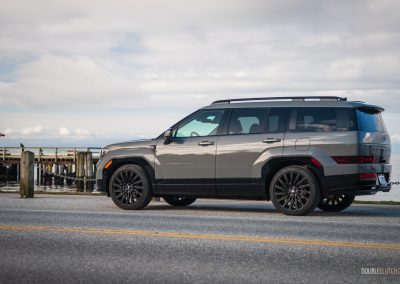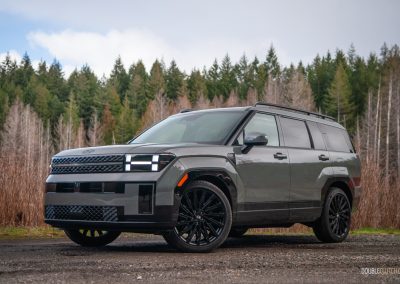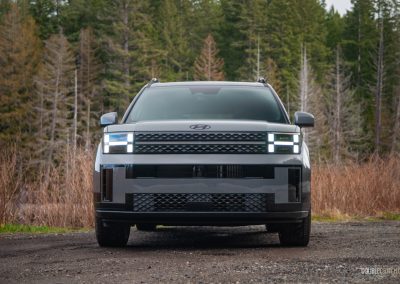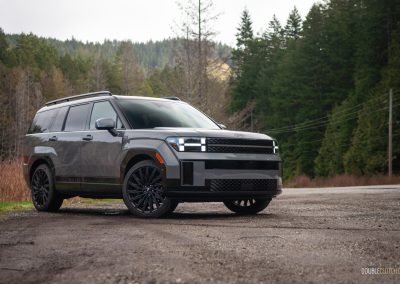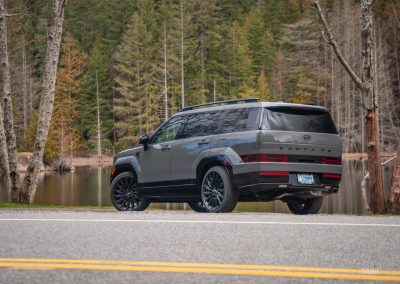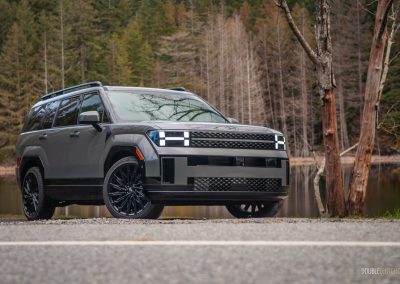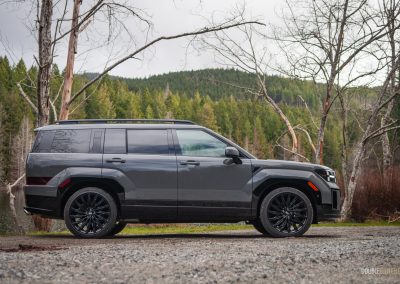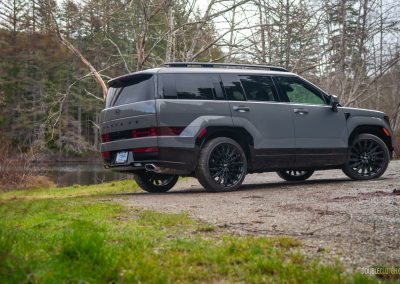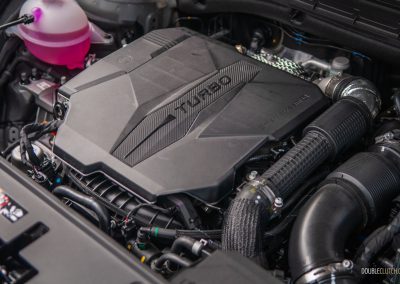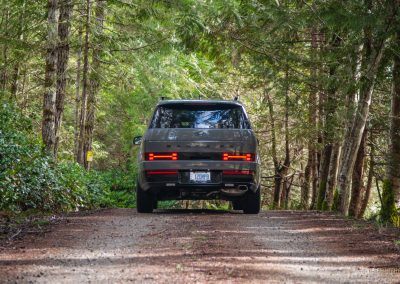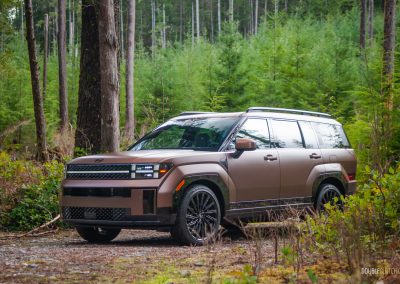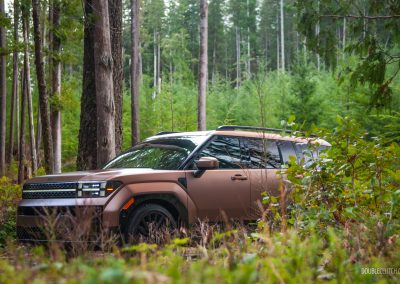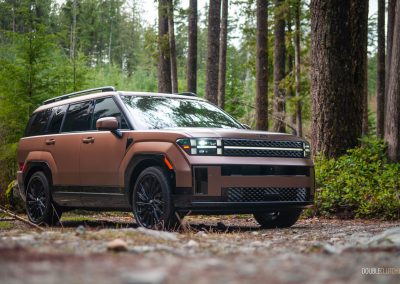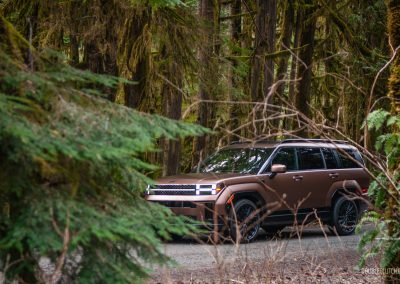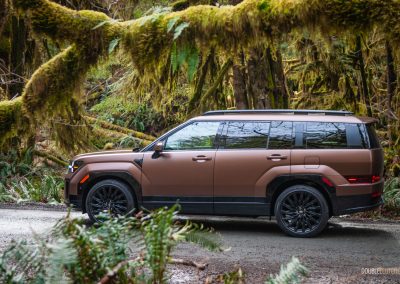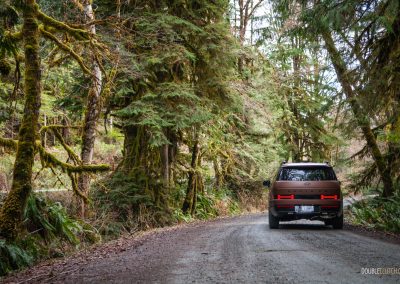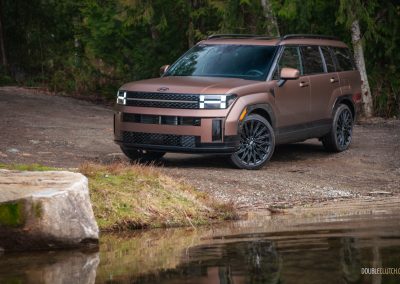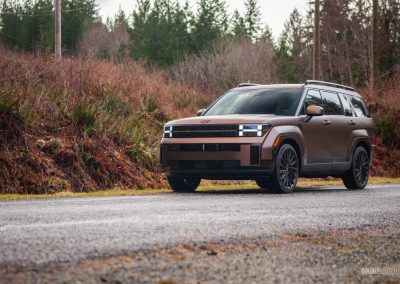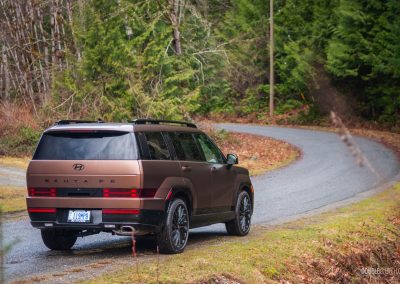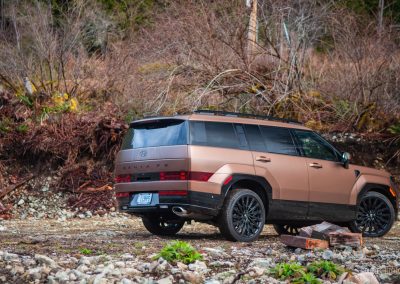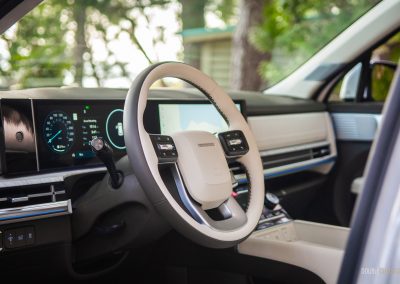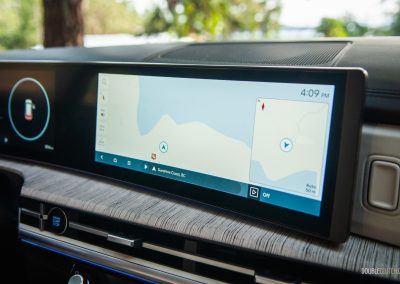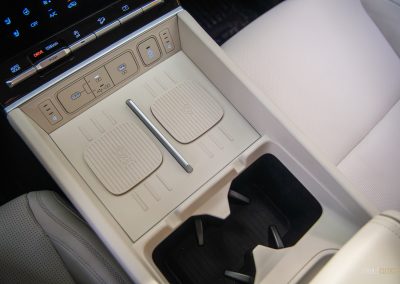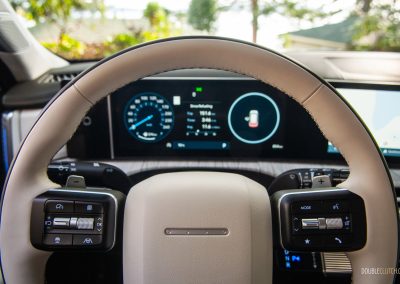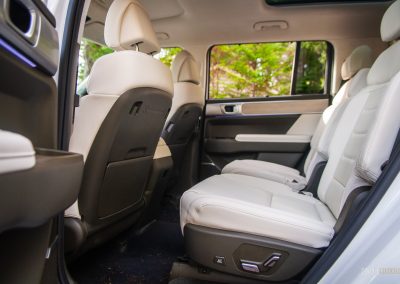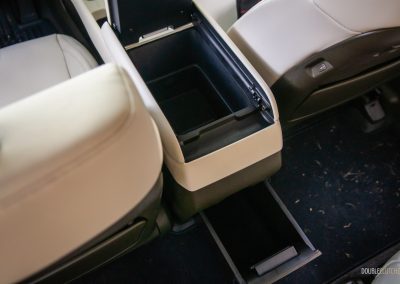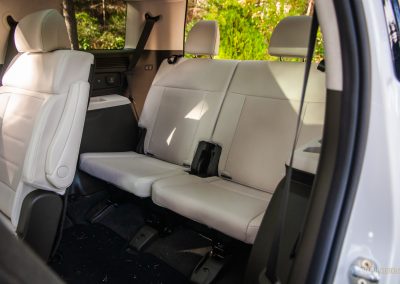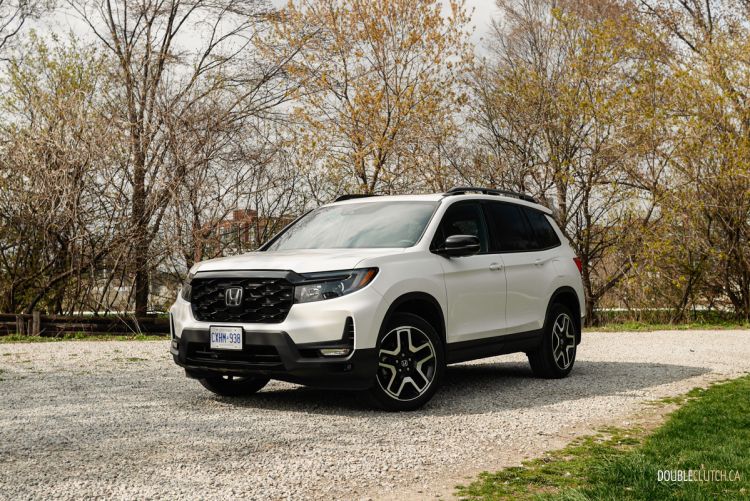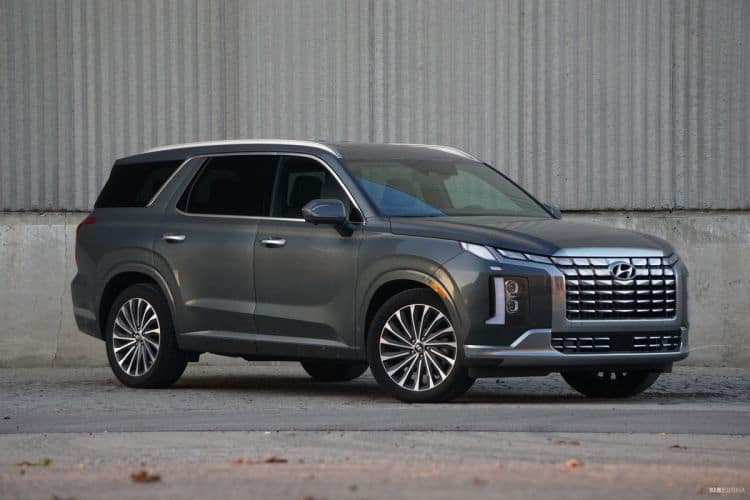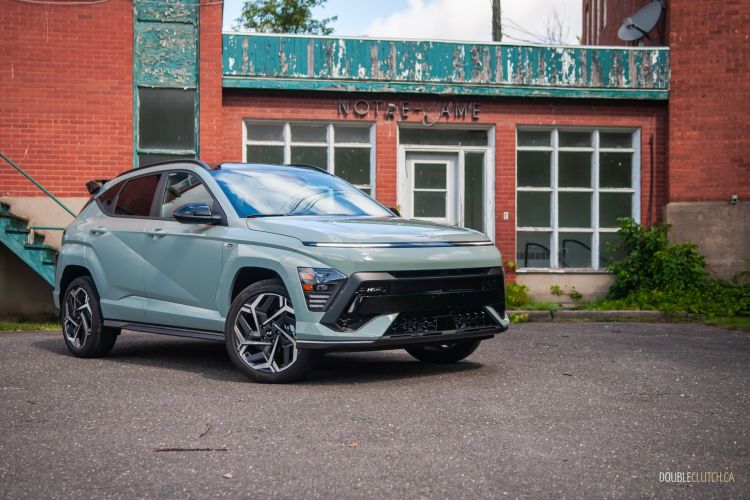SECHELT, B.C. — Boxy is back, baby! With rugged sport-utes like the Bronco and Defender exploding in popularity, not to mention our collective appetites for escaping to the great outdoors — or at least making it look like we do — it’s no wonder why even mainstream crossovers are ditching the blob-on-wheels look. The 2024 Hyundai Santa Fe is the latest to join this club, heading into its fifth generation with its biggest and most thorough makeover yet.
Obviously, the big news here is the Santa Fe’s glow-up. If imitation is the sincerest form of flattery, then Land Rover must be blushing right now. From the side, the Santa Fe is a dead ringer for a Defender, with its upright, squared-off side profile and blocky wheel arches. Higher up on the C-pillar, the Santa Fe wears an equally Defender-esque trim piece grafted into the glass. But unlike the Defender, where it’s a mounting point for accessories like the rooftop ladder, air compressor, or water tank, Hyundai cleverly concealed a handle which you can use to hoist yourself up for easier access to the roof rack. Nifty!
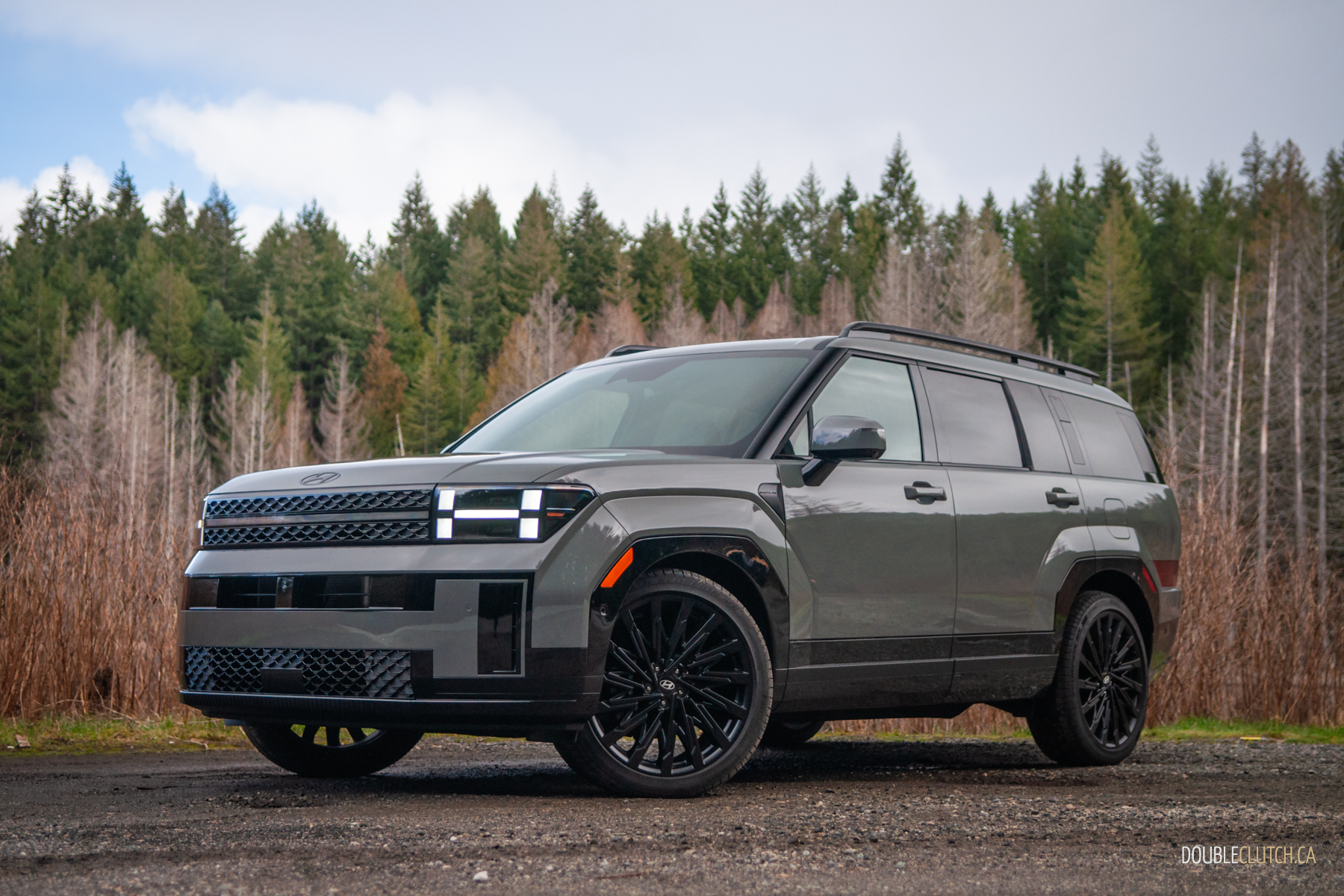
Overall, the Santa Fe is a departure over the 2024 Kona and Tucson, which seem “edgier” overall with creases and folds all over. The Santa Fe is more blocky and slab-sided; say what you will about its uncanny resemblance to certain other blocky SUVs out there, modelling it after something as aspirational as a Defender is a clever move.
The Santa Fe’s new look isn’t all form-over-function. The new look stretches the wheelbase to 2,815 millimetres — about 50 millimetres longer than the outgoing Santa Fe — and not only adds more legroom inside, but also a third row of seating. The Palisade still has the most legroom in the third row, but the Santa Fe has more second-row legroom and headroom all around. In practice, the Santa Fe’s third-row is tight on the legs, but the extra headroom helps it feel bigger than it is.
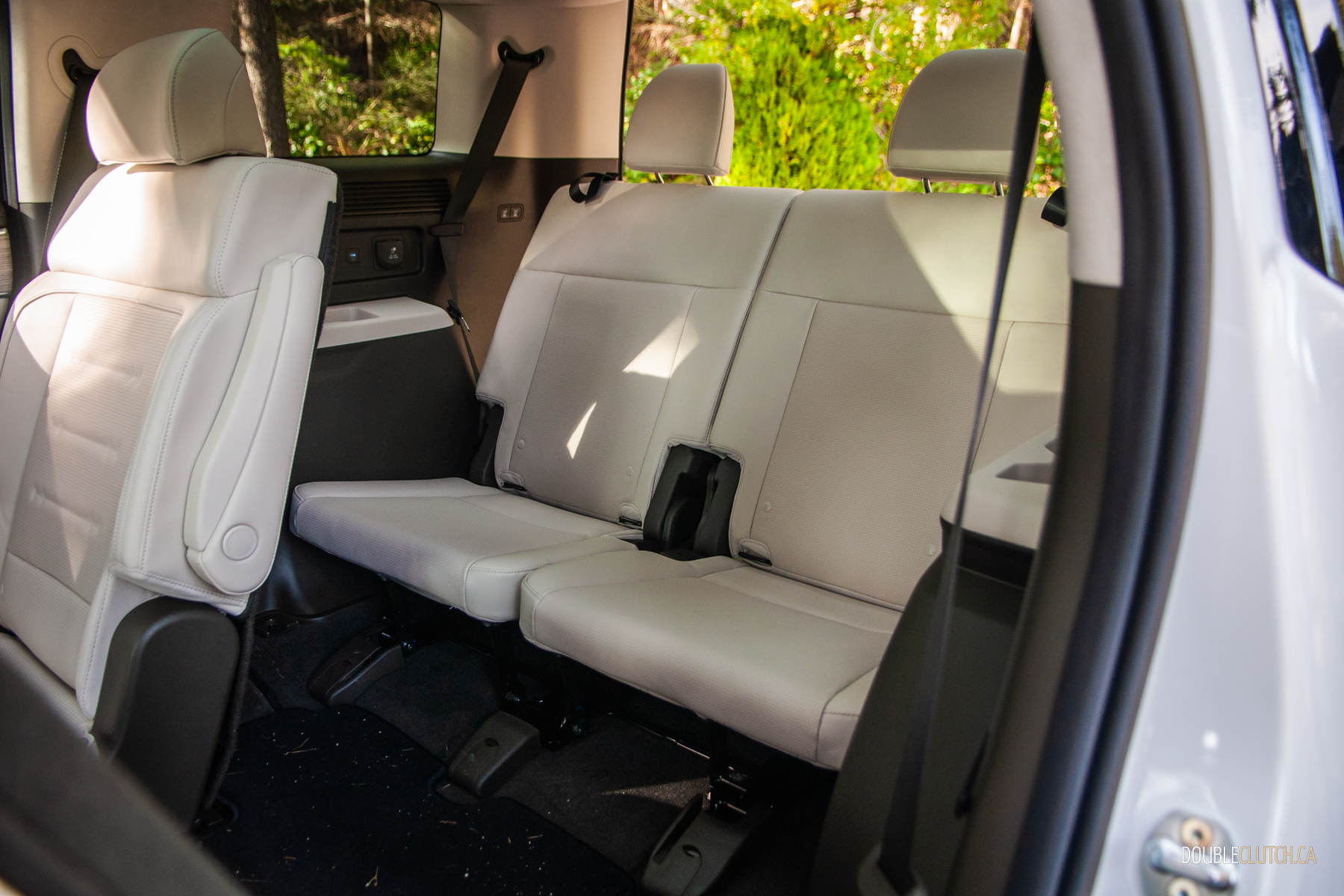
Along with extra legroom, Hyundai widened the rear hatch opening by six inches and the cargo floor isn’t too high off the ground, so loading junk into the trunk won’t be so much of a pain. You have 413 litres of cargo space to play with behind the third row, 1,148 L with the third row folded, and 2,267 with everything stowed. Not quite class-leading, but roomier than most in the segment.
Just as it does outside, the Santa Fe looks more modern and premium inside, too. It trades the layered dual-cockpit look for a simpler and cleaner horizontal layout. The materials feel great, the “wood” veneer and metallic accents look convincing, and the seats are supremely comfortable. Two 12.3-inch displays under one glass panel sits atop the dash, with one screen dedicated to infotainment and the other for the instrument cluster, aping what you’d see in something like a BMW X5. The displays are crisp, the responses are snappy, the user interface is intuitive, and you can finally get wireless Apple CarPlay and Android Auto on all trim levels.
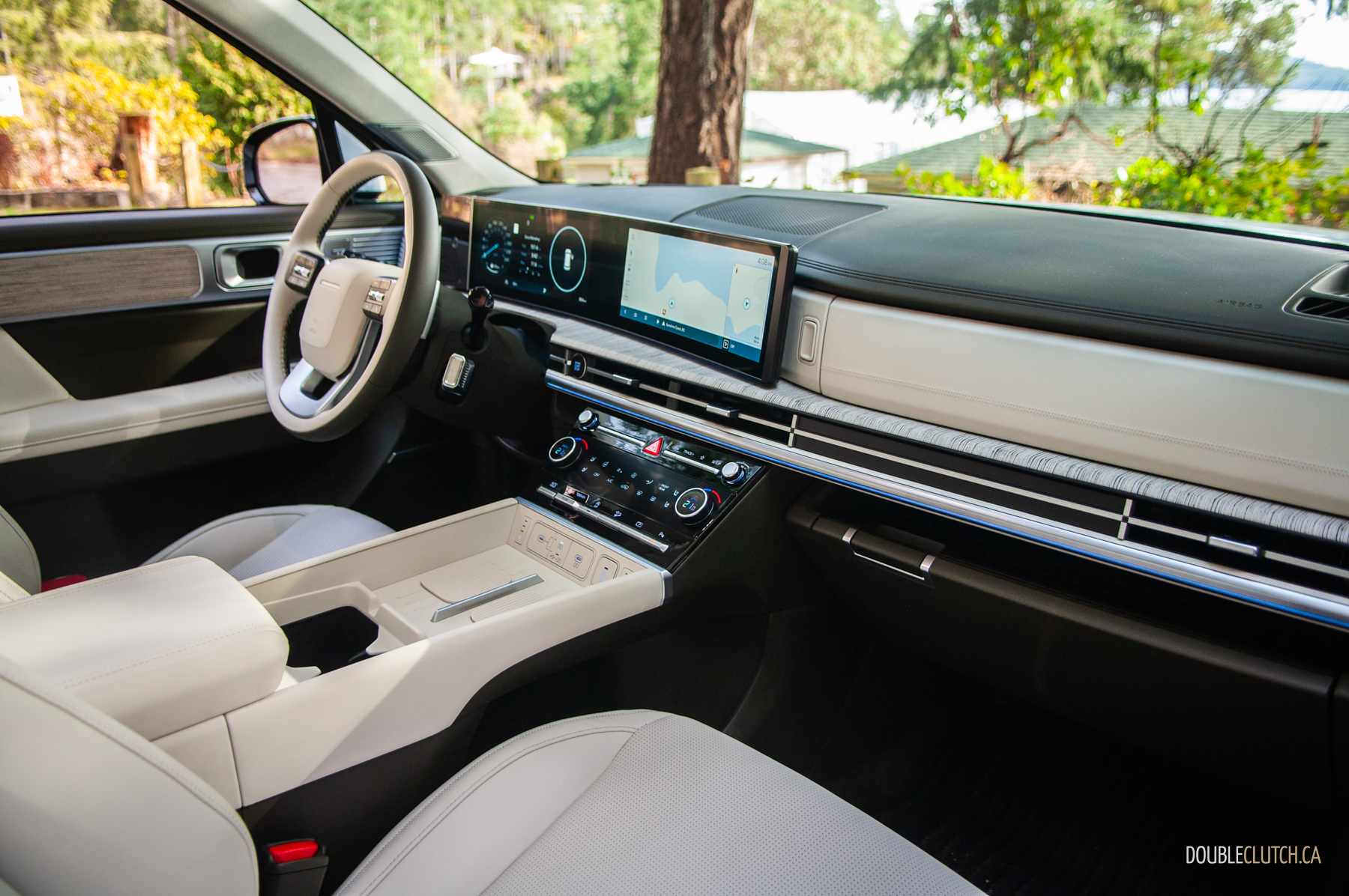
But what isn’t really intuitive is the digitized climate control display sitting below the infotainment. It can take a jab or three to select what you actually want, but hey, at least the Santa Fe has some physical switchgear just below the display. Plus, the smart touches continue inside the Santa Fe. The centre console is particularly clever; the armrest lid can open two ways, and there’s a pull-out drawer at the bottom for second-row passengers.
What’s surprising about the new Santa Fe is that even though it’s big, it’s easy to drive. The big windows mean visibility all around is excellent, the ride is quiet and composed even on the optional 21-inch wheels — though the lesser trims rolling on 18s are more compliant — and the cabin is well-isolated from wind and road noise. The Santa Fe’s turning circle isn’t the greatest, so some three-point turns might become five-point turns, but the available 360-degree camera system is a helpful extra set of eyes.

Though the look is all-new inside and out, most of the Santa Fe’s powertrain options carry over. Base models use a hybrid electric 1.6L turbocharged four-cylinder engine, putting out a net system output of 231 horsepower and 271 pound-feet of torque. That’s hooked up to a six-speed automatic — you read that right, no CVT here. Fuel economy promises to be around the 6.8 L/100 km in the city, 6.9 highway, and 6.9 combined. Hyundai does offer a plug-in hybrid in Europe, but has no plans to bring it back to Canada just yet.
We sampled the off-road ready XRT and the top-spec Ultimate Calligraphy. This means purely internal combustion motivation, in the form of a 2.5-litre turbocharged four-cylinder. It’s a similar setup to the Santa Cruz, putting out a healthy 277 hp and 311 lb-ft of torque, and working with an eight-speed dual-clutch automatic transmission. It’s a good combination, offering good power, snappy shifts, and standard all-wheel-drive in Canada, but you pay in fuel economy. The 2.5 is rated at 12.1 L/100 km city, 8.8 highway, and 10.6 combined. If you’re inclined to tow, the full gassers are the way to go, rated to haul up to 4,500 pounds, versus 2,500 for the hybrid.
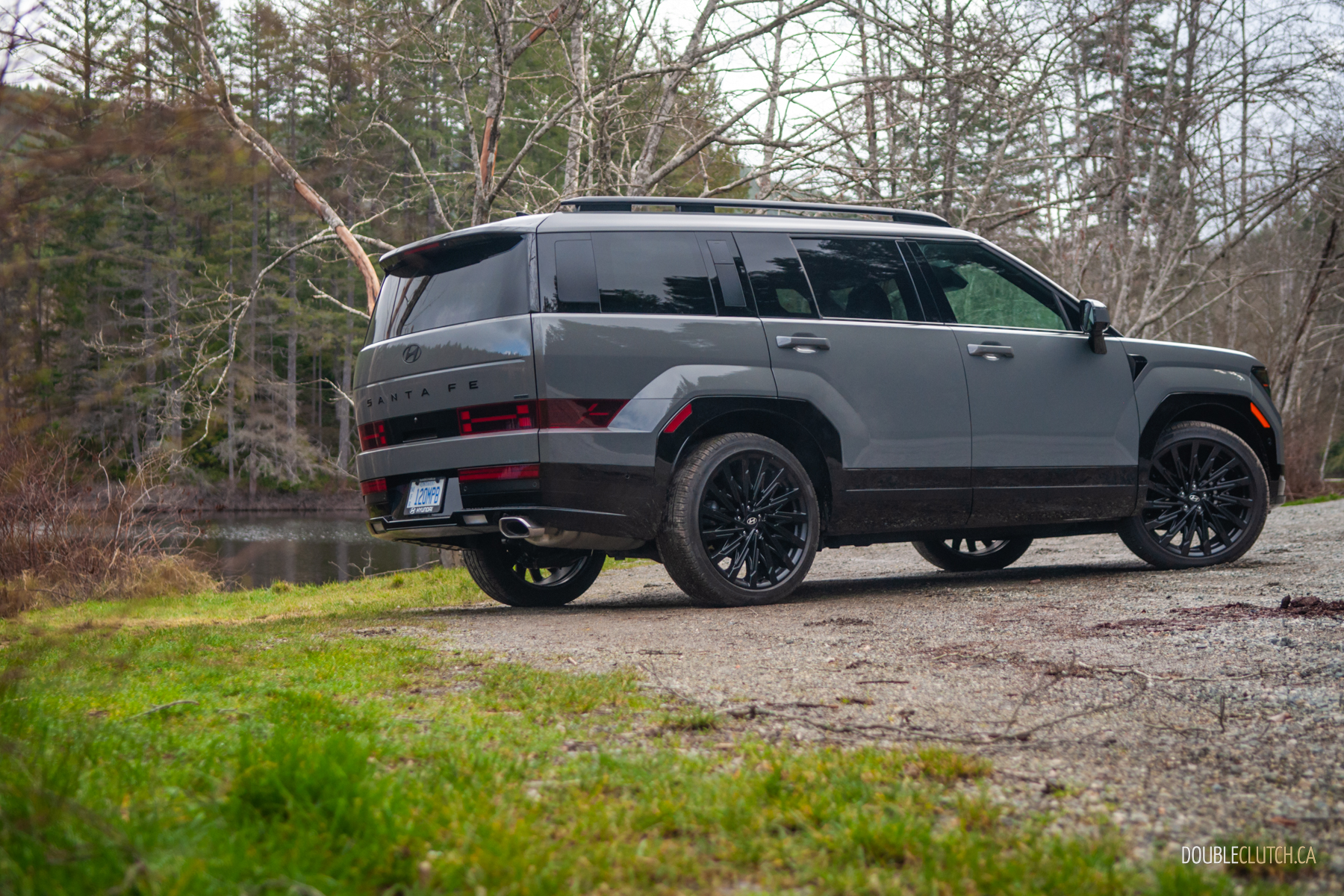
Pricing ranges from $40,999 for the base Preferred trim with the hybrid powertrain, all the way up to $53,499 for the posh and loaded Ultimate Calligraphy. The XRT slots in the middle of the lineup at $46,999, adding more off-road inspired styling, 18-inch wheels with Continental all-terrain tires, a slight lift, some interior dress-up, a front skid plate, and more towing capacity. We think the sweet spot will be the mid-range Preferred with the Trend package, which for under $45,000 adds 20-inch wheels, a big sunroof, the aforementioned digital gauge cluster, and more — plus a bonus helping of hybrid fuel economy.
What Hyundai has done here is the classic “take a good thing and make it even better.” In doing so, the Santa Fe has evolved into one of the strongest buys in the segment, offering a more flexible interior, a third row, and some clever and aspirational design in a comfortable and easy-to-live-with package. The 2024 Hyundai Santa Fe is in dealers now with the 2.5L powertrain; hybrids will follow later this summer.



